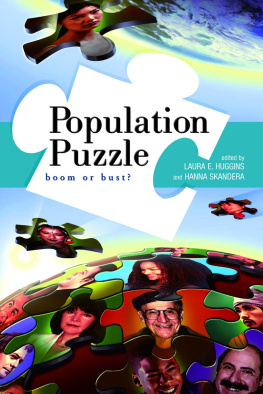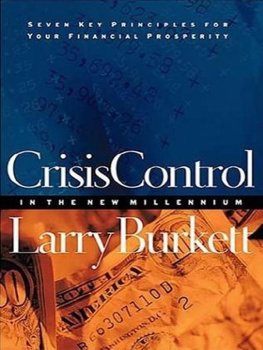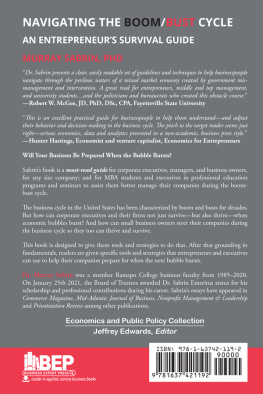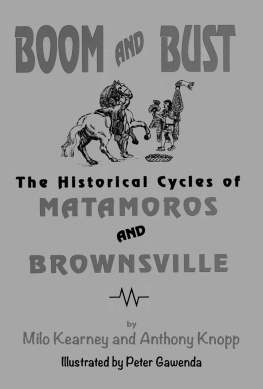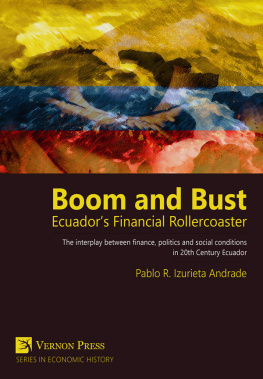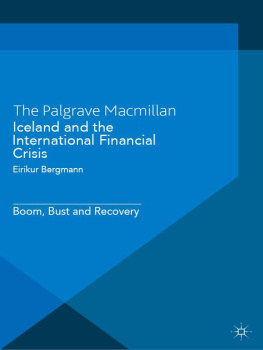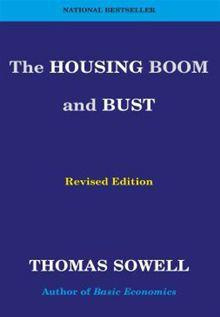

The Hoover Institution on War, Revolution and Peace, founded at Stanford University in 1919 by Herbert Hoover, who went on to become the thirty-first president of the United States, is an interdisciplinary research center for advanced study on domestic and international affairs. The views expressed in its publications are entirely those of the authors and do not necessarily reflect the views of the staff, officers, or Board of Overseers of the Hoover Institution.
www.hoover.org
Hoover Institution Press Publication No. 529
Copyright 2004 by the Board of Trustees of the Leland Stanford Junior University
All rights reserved. No part of this publication may be reproduced, stored in a retrieval system, or transmitted in any form or by any means, electronic, mechanical, photocopying, recording, or otherwise, without written permission of the publisher. , a listing of permissions obtained for the inclusion of articles in this volume, constitute an extension of this copyright page.
First printing, 2004
11 10 09 08 07 06 05 04 9 8 7 6 5 4 3 2 1
Manufactured in the United States of America
The paper used in this publication meets the minimum requirements of the American National Standard for Information SciencesPermanence of Paper for Printed Library Materials, ANSI Z39.481992.
Library of Congress Cataloging-in-Publication Data
Population puzzle : boom or bust? / edited by Laura E. Huggins and Hanna Skandera.
p. cm. (Hoover Institution Press publication ; no. 529)
Includes bibliographical references and index.
ISBN 0-8179-4532-6 (alk. paper)
1. Overpopulation. 2. Population. 3. Quality of life. I. Huggins, Laura E., 1976 II. Skandera, Hanna, 1973 III. Series.
HB871.P654 2004
304.62dc22
2004004532
Contents
Ann F. Wolfgram and Maria Sophia Aguirre
Thomas Malthus
Ronald L. Meek
Paul R. Ehrlich
Julian Simon
Lester R. Brown, Gary Gardner, and Brian Halweil
Nicholas Eberstadt
J. Philip Wogaman
Joel E. Cohen
Garrett Hardin
Julian Simon
Worldwatch Institute
Terry L. Anderson and Pamela S. Snyder
John Ritter
Paul Harrison and Fred Pearce
Bjrn Lomborg
United Nations Population Fund
S. Fred Singer
Lester R. Brown
D. Gale Johnson
Anthony Young
Julian Simon
Roger A. Sedjo
Worldwatch Institute
Dave Gorak
John C. Caldwell
Ben Wattenberg
Peter G. Peterson
Richard H. Robbins
Nicholas Eberstadt
Radhika Sarin
Alvin Powell
Stuart Anderson
RAND
Michael Renner
Brian Nichiporuk
Michael Renner
Richard Easterlin
Adrienne Germain and Jane Ordway
The Information Office of the State Council of the Peoples Republic of China
United Nations Educational, Scientific, and Cultural Organization
Population Council
United Nations Population Fund
Jeff Madrick
Seth W. Norton
Ester Boserup
W. Michael Cox and Richard Alm
James Gwartney and Robert Lawson
Gary S. Becker
Robert Whalen
Lindsey Grant
Kingsley Davis
Garrett Hardin
Lord Peter T. Bauer
Robert Whalen
Joel E. Cohen
John Bongaarts and Rodolfo A. Bulatao
John Roach
Karl Zinsmeister
Index
Figures and Tables
PART I
Figure
Table
PART II
Figures
Table
PART III
Figures
Tables
PART IV
Figures
Tables
PART VI
Figures
Table
Foreword
A t least since Malthuss population essay in 1798, there has been great interest and concern among many about population growth and its economic, social, and environmental effects. Some scholars have argued over the decades that the world would experience widespread disaster and starvation because of rising population rates.
Yet much of the world has quietly undergone a demographic transition. Almost half the countries of the world have population birthrates that are below replacement. Although families are having fewer and fewer children, average life expectancy is growing. Thus young working adults make up a declining share of the total population, and senior citizens account for a growing share. This transition raises major questions relating to intergenerational transfer burdens, such as a pay as you go social security system. This leads to policy questions relating to whether a decline in birthrates will make it easier for people to turn their attention from the numbers to the qualities of humankind.
Such questions have inspired several fellows at the Hoover Institution, notably, Gary Becker, Milton Friedman, and George Shultz, to advocate a research initiative on a topic of such prominent importance. The goal of this effort is to present pertinent facts surrounding the population debate that will add to the debate a constructive voice, with positive policy messages for societal consideration.
Population Puzzle: Boom or Bust? provides an overview of the principal issues surrounding world population growth and conveys the various viewpoints of the population debate with the goal of giving those not familiar with the prevailing literature an idea of the differing views. After exploring the many perspectives of the debate, the reader is left to evaluate the population bomb hypothesis and what it might mean for the future of humanity.
I hasten to thank Bill Draper for his support of this project, in addition to his wise counsel as a longtime member of Hoovers Board of Overseers. We could not have launched this project without his generous backing. I also acknowledge another overseer and supporter, Bill Edwards, who for a long time has encouraged me to think about population as an important topic for the Institution to investigate.
Population Puzzle: Boom or Bust? has allowed us to get our own arms around this issue in terms of yielding a first step forward in shaping our future efforts. We hope that this book will provide others with a basis for assessing the population conundrum.
| John Raisian |
| Director |
| Hoover Institution |
Acknowledgments

